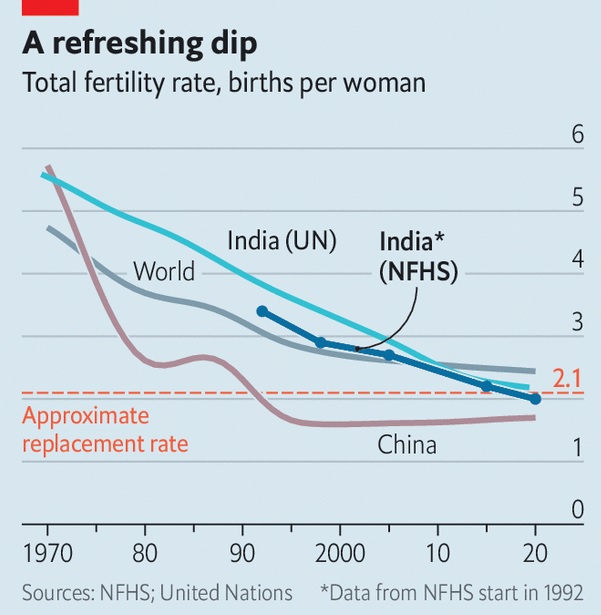The world is ill-prepared for the global crash in children being born which is set to have a jaw-dropping impact on societies.
Birth Rate- The total number of births in a year per 1,000 individuals.
Fertility Rate- The total number of births in a year per 1,000 women of reproductive age (15-49 years).
Replacement level fertility- The level of fertility at which a population exactly replaces itself from one generation to the next, i.e., the level of fertility needed to keep the population the same from generation to generation.
World Population Prospects is prepared by Population Division of the Department of Economic and Social Affairs of the UN Secretariat. It presents population estimates from 1950 to the present for 237 areas.

Positive implications
Negative implications
Global experimental policies to boost fertility
- Germany- Boosts births through liberal labour laws, allowing more parental leave and benefits.
- Denmark- Offers state-funded IVF for women below 40 years.
- Hungary- Nationalised IVF clinics.
- Poland- Gives out monthly cash payments to parents having more than two children.
- Russia- Makes a one-time payment to parents when their second child is born.
- Russia reinstituted the Soviet-era ‘Mother Heroine’ title, who bore and raised more than 10 children amounting to Rs. 13 lakh.
References